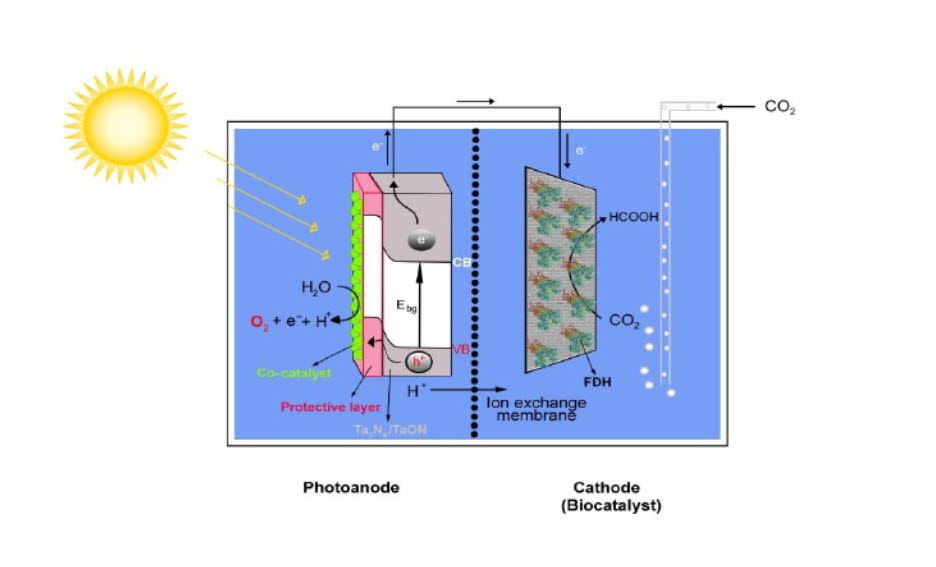CO2 capturing and direct conversion to energy-rich compounds is a process which will help remediate the disastrous effects of the irrational use of fossil fuels and greenhouse gas emissions. This project represents an interdisciplinary approach, which contributes to the development of a CO2 emission-free technology as well as a CO2-recycle one. For this purpose, a bio-hybrid photoelectrochemical cell is introduced.
In the anode compartment, the photo-absorbers are nanostructured composite photo-electrodes (Ta3N5 and TaON), which are activated by visible light, but in order to improve their stability a protective layer (SiC) will be applied. Following that, a surface deposition of a water oxidation catalyst, Co3O4, will ensure the water oxidation reaction. In the cathode compartment, the generated electrons and protons of the oxidizing process in the anode will be utilized by the formate dehydrogenase enzymes (FDH) to selectively reduce CO2 to formic acid. Different carbon-based materials of large surface area will be employed to immobilize the enzymes for direct charge transfer and high catalytic activity. At first, this system will be optimized in aqueous electrolytes and then integrated to an all-solid-state one by applying these electrodes to polymer or ceramic solid state proton conductors. This modification serves as a starting point for simple robust PEC cells for CO2 conversion based on green chemistry.
The project is collaboration between the University of Oslo, the Oslo University Hospital and SINTEF. It runs for 3.5 years and recruits and trains one PhD and one post-doctoral researcher.
Project type: Research Project (Nano2021, 250261)
Budget: around 10 MKr
Partners: Oslo University Hospital and SINTEF
Coordinator: Truls Eivind Norby (University of Oslo)
